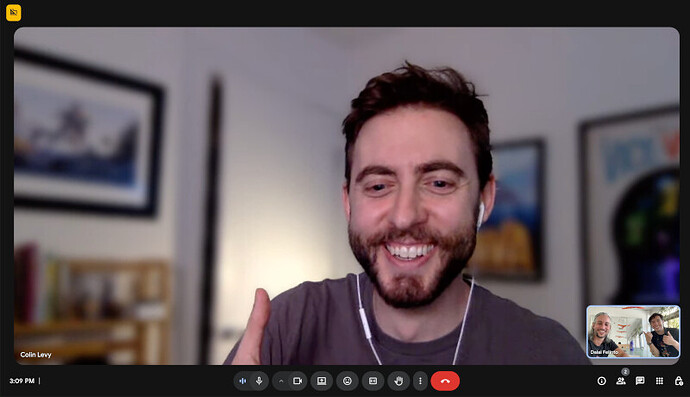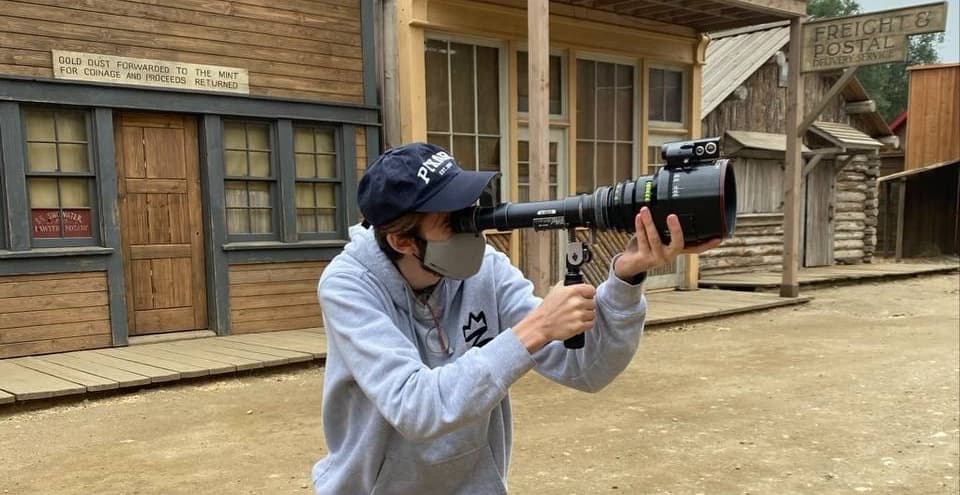Attendees:
- Colin Levy
- Dalai Felinto
- Pablo Vazquez
In the previous XR/VR meeting location scouting wasn’t addressed. This meeting goes over its design principles and findings.
Topics:
- Use-case
- Requirements
- Director Viewfinder
- Camera Lens
- Navigation
- Enhanced Landmarks
- Playback Mode
- Puppetry Blocking
Use-case
Location scouting allows movie directors and directors of photography to assess the cameras (lens, focus, aperture) and vantage to use for different shots, while being inside the 3D environment.
This could work for sets built with traditional 3D modeling, photogrammetry and potentially in the future things like Gaussian Splatter, light fields and point clouds.
Requirements
- VR headset
- VR controllers
Director Viewfinder
This project draws from real world, to simplify the adoption of the system by directors. At the core of it, Blender creates a virtual director viewfinder to capture the camera point of view while immersed in the scene.
Film director Colin Levy with a director viewfinder on set.
With this device you can control:
- Zoom level
- Focus
- Aperture
Virtual Director Viewfinder
The VR controller becomes a camera. The physicality of the VR controller can mimic the experience of holding a director’s viewfinder and even record its motion for a handheld effect.
This can even be adapted for shoulder mount camera rigs. A VR controller can be used where the camera (or phone) usually sits.
Passepartout
The viewfinder should show the camera view inside a passepartout. The passepartout can be used to show more context (overscan) as well as extra information.
Camera Lens
For the initial version, it should use the active camera lens as a start point, allowing the user to change it incrementally.
In the future we could also allow the user to define a set of lens kit and quickly switch between them.
In all cases it is important to indicate the current lens. It could show in the passepartout.
Navigation
While the preferred hand is reserved for the viewfinder, the other hand/controller is used for navigation.
Enhanced Landmarks
There are so many similarities between landmarks and the data stored for location scouting that they could be merged.
For that we may need to introduce separate modes for the landmark behaviour:
- 360 Panorama (existing behaviour)
- Viewfinder (new behaviour)
Each landmark will need to store more information:
- Camera Lens, Focus1, Aperture1
- Camera transformation: Position, Orientation, Shift1
1 Not initial targets.
Camera Animation Keyframes
Landmarks should be convertable to camera animation data. Each landmark should be a new keyframe for the camera object and lens data.
Playback Mode
The viewfinder should also have a “playback” mode where the shots can be reviewed while still in VR.
The best analogy for this is a phone or DSLR camera, where you can switch from live camera mode to gallery mode. Showing one “photo” at a time is okay.
Being able to go back and forth between the photos is required. Everything else is good to have, but not for the initial implementation (e.g., delete them, change the insertion point for new views).
Puppetry Blocking
It would be great to use a VR controller to block a scalable 3D object to help understand the composition. This is not required and can be done initially as regular 3D objects, pre-animated.

